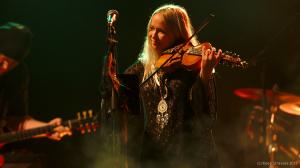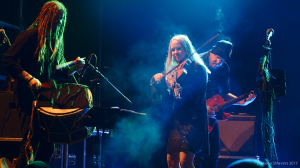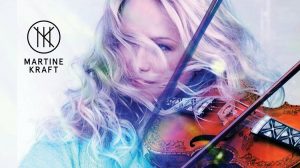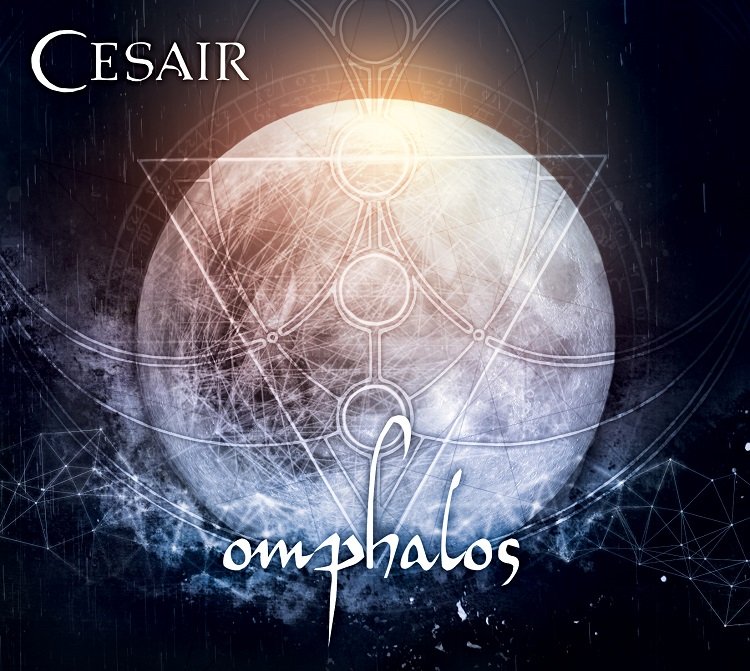
Cesair is a six-person band that blends Classical together with Pop (World) music, giving it a nice Eastern-European feel as they go along. Together, this makes for a unique sounding band. Cesair themselves describe their sound as ‘Epic Folk and Mythic music´. I would say Carl Orf meets Vivaldi meets Rastaban meets Faun equals Cesair. They are one of the few bands that really manage to marry Classical skills with Pop music and get away with it.
With Dies, Nox et Omnia Fieke, as a producer, recorder, editor and mixer, gave Cesair a real powerful sound. Just as Carl Orf‘s Carmina Burana blows you away with the bold sounds of a big orchestra playing at full strength, Cesair managed to do the same. The accordion and hurdy-gurdy themselves are already instruments that can fill a room and Fieke made good use of the surround sound to give the whole band a overpowering impact. Hearing the main instruments in front of you, but nice bouzouki and violin accents coming from all sides. Just listen to Cansa and you’ll hear the violin playing in the corner of your ear. Or Graeica where Thomas’ bouzouki is placed in the same way that gave Dies, Nox et Omnia a really big orchestral sound.
As most of you will know, Fieke van den Hurk left the band last year to focus on her career as a producer and sound engineer at her Dearworld studio. The band was extended with new, but well-experienced band-members Luka Aubri (Rastaban) and Faber Auroch (Sowulo). With this change, there was no way around it… the big question with Cesair‘s second album was: “How would they sound with their new line-up?”. The pre-CD-release concert at Castlefest 2017 sounded very promising. Visually the band was as entertaining as ever. During the concert there was even that bit of ‘Fieke magic’, with her standing in the audience and singer Monique van Deursen and Violinist Sophie Zaaijer goofing with her from off the stage.
But what about the album? Well, Fieke is still part of the band on Omphalos!
Although saying her formal goodbyes to the audience on stage in March of 2017, with a wonderful concert in the Peppel in Zeist, the band decided Fieke was so involved writing the Omphalos songs that she still deserved to be named as a band-member in the credits, next to new members Luka and Faber.
Therefore she says her official goodbyes to us, the fans, with the album Omphalos. A fitting and touching tribute to Fieke from the band, showing how beautiful a friendship in music can be.
Onto Omphalos.
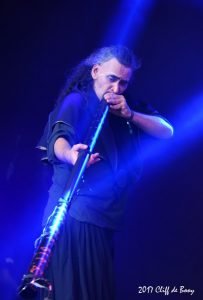 With this album the band went a different route. This time the mix is more open. Fieke, also producing, recording and mixing this album, plays with the volume in stead of putting up this impressive wall of sound. Listening you can discover little pearls. Lead soloists are pushed forward and supporting instruments are less pronounced in the mix, leading your ear through the music. New band-members Luka and Faber fit well within the music.
With this album the band went a different route. This time the mix is more open. Fieke, also producing, recording and mixing this album, plays with the volume in stead of putting up this impressive wall of sound. Listening you can discover little pearls. Lead soloists are pushed forward and supporting instruments are less pronounced in the mix, leading your ear through the music. New band-members Luka and Faber fit well within the music.
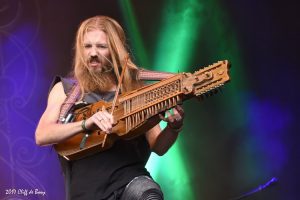 Fieke took on a more supporting role which made room for my personal highlight on
Omphalos:
the string section. Both Sophie and Faber play wonderful string melodies. Their solos and melody lines really take the lead role together with Monique’s voice. While
Dies, Nox et Omnia
focuses on the band as a unit, with
Omphalos
the talents of each individual musician comes out. And they are talented! Monique has a wonderfully pure and powerful, classically trained voice with an impressive range. One of the strong-points of Cesair. In this more open sound Thomas Biesmeijer really gets the chance to colour the music with his guitar and bouzouki chords. This new sound also means Jan de Vries can shine more as a percussionist. His drums don’t disappear in the overall sound, but are a main feature. Just listen to him drive to music on
Troll Kala Mik.
Fieke took on a more supporting role which made room for my personal highlight on
Omphalos:
the string section. Both Sophie and Faber play wonderful string melodies. Their solos and melody lines really take the lead role together with Monique’s voice. While
Dies, Nox et Omnia
focuses on the band as a unit, with
Omphalos
the talents of each individual musician comes out. And they are talented! Monique has a wonderfully pure and powerful, classically trained voice with an impressive range. One of the strong-points of Cesair. In this more open sound Thomas Biesmeijer really gets the chance to colour the music with his guitar and bouzouki chords. This new sound also means Jan de Vries can shine more as a percussionist. His drums don’t disappear in the overall sound, but are a main feature. Just listen to him drive to music on
Troll Kala Mik.
 With
Dies, Nox et Omnia
Cesair took us on a journey through classic texts and history. Quoting and interpreting passages of Babylonian, medieval Dutch, 7th century Greek and 16th century Spanish texts to name a few.
With
Dies, Nox et Omnia
Cesair took us on a journey through classic texts and history. Quoting and interpreting passages of Babylonian, medieval Dutch, 7th century Greek and 16th century Spanish texts to name a few.
On Omphalos, Monique takes us with her on a similar journey through old and modern literature. The inspiration while writing this album came from the Roman poet Quintus Horatius Flaccus (a.k.a. Horace), the Spanish poet Federico García Lorca, the Romanian poet George Coșbuc, some anonymous sources and the poetic Edda, an anonymous collection of Icelandic medieval poems.
As always I don’t want to go through all the songs on the CD. It’s way more fun to discover the music yourself without me spoiling everything. But still, here are some I really wanted to high-light.
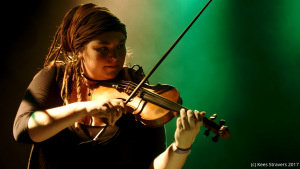 Erda,
the first track of the album: a first class earworm. Straight away, the more open sound of this album works it’s magic. Monique and Sophie shine in this song. As said, Monique is such a skilled mezzo-soprano, she impresses throughout the whole album, as does Sophie. Hearing her taking the lead solo so clearly and often, I suddenly realise how amazing she is as a violinist. Stunning.
In all, if you listen to
Erda
and like it, you can safely buy the whole album. The song is a perfect representation of Cesair anno 2017.
Erda,
the first track of the album: a first class earworm. Straight away, the more open sound of this album works it’s magic. Monique and Sophie shine in this song. As said, Monique is such a skilled mezzo-soprano, she impresses throughout the whole album, as does Sophie. Hearing her taking the lead solo so clearly and often, I suddenly realise how amazing she is as a violinist. Stunning.
In all, if you listen to
Erda
and like it, you can safely buy the whole album. The song is a perfect representation of Cesair anno 2017.
Many of you will already know Chorihani from various concerts: a cheerful, fast song with, again, a beautiful solo from Sophie, this time straight from a gipsy party it seems. Good old Fieke and her accordion make it even more Eastern-European.
Troll Kala Mik
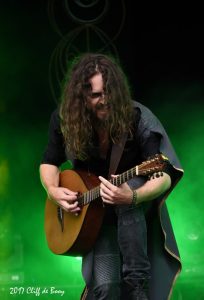 we also know from the Cesair concerts. It´s a duet (or is it a duel?) between the beautiful poet Monique and the ugly troll Thomas. Pick your own favourite, but mine would be… …Jan. His percussion work is the foundation of this song. You could even say he plays the lead instrument on this.
we also know from the Cesair concerts. It´s a duet (or is it a duel?) between the beautiful poet Monique and the ugly troll Thomas. Pick your own favourite, but mine would be… …Jan. His percussion work is the foundation of this song. You could even say he plays the lead instrument on this.
Another duet is Ahes. It’s Cesair’s interpretation of a medieval love story from Brittany. It tells of a forbidden love between princess Ahes (a.k.a. Dahut) and a lover she invited in, before being married. A great sin in medieval times. Of course the whole city was punished and swallowed by the sea, as would happen in old times. Faun‘s Stephan Groth takes on the role of the lover from the ocean, who persuades Ahes to open the gates of her city. A guest appearance to look forward to should Faun and Cesair play the same MPS festivals the coming season.
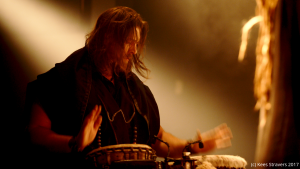
Mardochaios is the Greek name for the Mesopotamian god Marduk. The song is an anthem for him, again driven by the powerful drums of Jan, followed by some beautiful violin melodies and vocals. My personal favourite song of the album.
Yet another song that has an interesting musical feel is Boudicca. The intro with the strong, almost threatening, male/female vocals make it sound like an menacing Enya or Clannad on their very best days. Sophie´s violin solo pulls you straight back into the Cesair world but the song keeps that eerie feel to it… A real tribute to the lady who dared to defy the Romans.
As i said, I could name all the songs because they all are equally good. Omphalos is an album that you need to get if you love an impressive mix of classical and folk/world music. It’s an album that will mesmerize you, make you want to play it again and again. One piece of advice: play it loud and get the whole impact of the album. It’s going to be worth it. At full volume is where the true beauty of Omphalos appears in all its glory… or live on stage of course!!
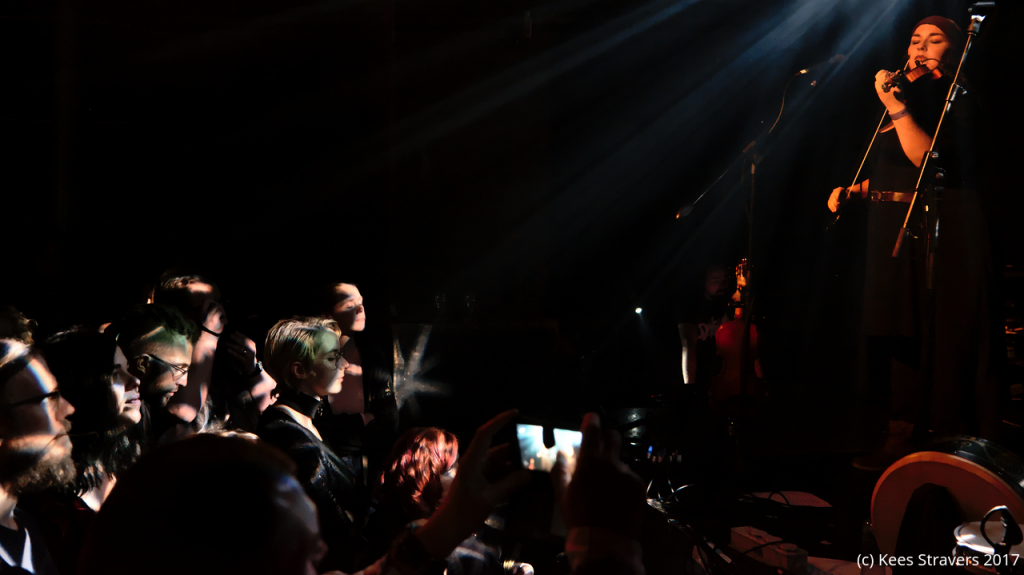
– Cliff
– Pictures 1, 3, 4 and 7 taken at Castlefest 2017 and picture 2 taken at the Gothic & Fantasy Beurs 2013,
courtesy of: Cliff de Booy
– Pictures 5, 6, 8 and 9 taken at the Omphalos release party at the Willemijn, Almere 02-12-2017,
courtesy of: Kees Stravers

